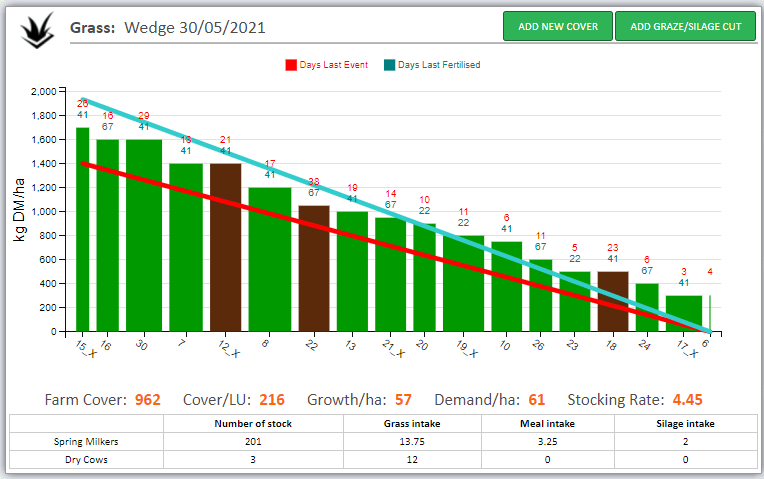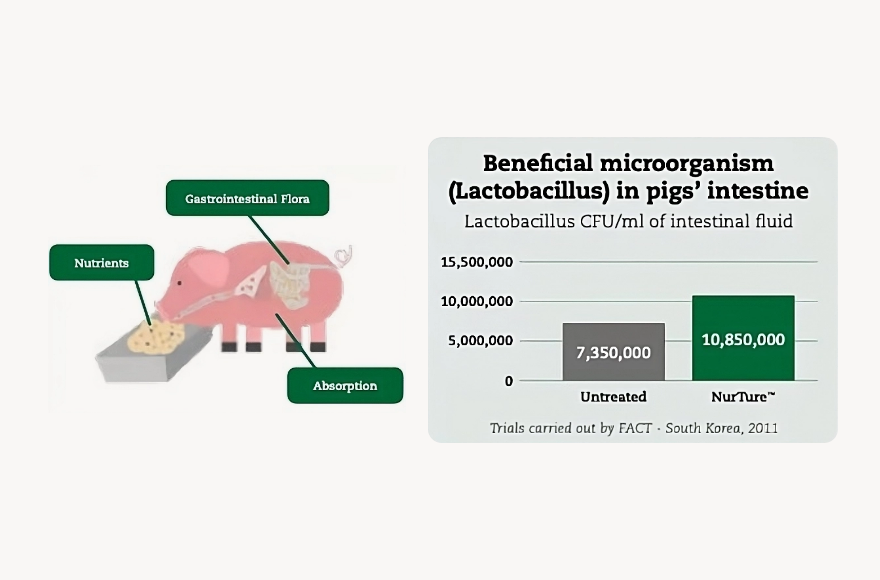May 31st 2021:
2021 – such an unpredictable year! It has been tough growth wise but it has shown us that the biological approach we are taking here on our farm is very resilient – even in a cold year like this! I am feeling very happy with the results and know that Biological Farming is here to stay for us. The farming system we are building here now has biology at its core. The way the farm is responding to low amounts of nitrogen is remarkable and it is like the soil is telling us to get out of our way and let us do our work.
A bit of Summer finally arrived last week (May 26th) and allowed us to snatch some high quality 1st cut. The first part of silage cut is relatively high-quality silage earmarked for late and early lactation cows and the remainder will be for dry cows. All home silage ground received 2,500 gallons/acre of slurry in February and got a grazing. A second application of slurry was applied in late March/Early April followed with 30 units/acre of foliar nitrogen. When we add up the chemical N and ammonium N from slurry applied it comes out at a total of 80 units/acre. This is more than sufficient to grow good crops of silage for us and the volume harvested last week showed that. The remainder of the silage will be cut when the weather allows but the bulk of grass in those fields is remarkable considering the year and the low level of chemical N used.
Despite the low levels of bagged nitrogen used, silage fields have greened up considerably since cutting – there is no N deficit building up! The slurry applied (we mixed parlour washings into the tanks as we find it grows more grass when diluted) was tested and shows the power it has even when watered down considerably:
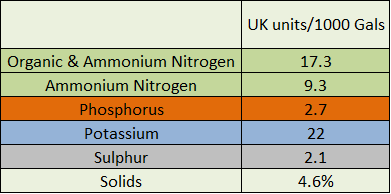
The 9.3 units of ammonium nitrogen is part of the 17.3 units of total Nitrogen. Not all of these nutrients are available for growth (50 % of the P and 90% of the K are) but neither are all the nutrients in a bag of fertiliser. One valuable lesson learned this Spring is the use of slurry. The response we saw on our paddocks to early slurry application reinforced for us the power that slurry has and we will try and make sure (weather depending) that all ground gets at least one application of slurry early Spring for the future. Growth here this Spring was on par with other farms with no fertiliser spread on grazing paddocks until March 24th and that was a maximum of 23 units/acre.
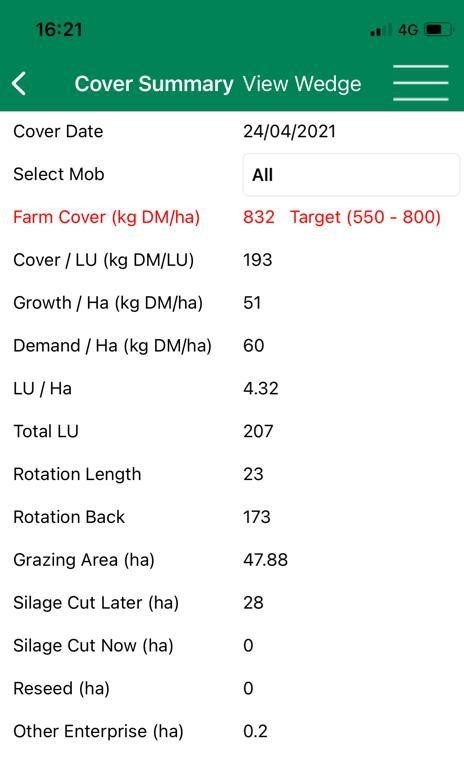
In March/April when grass growth was slow, we buffer fed cows with maize silage, ensiled fodder beet and dairy pellets from Barryroe co-op. Cows are currently averaging 2 – 2.1 Kg MS but the wet weather is unsettling them. Cow health is good but repeats are slightly higher than last year – all weather related. We are pre-mowing some paddocks at the moment.
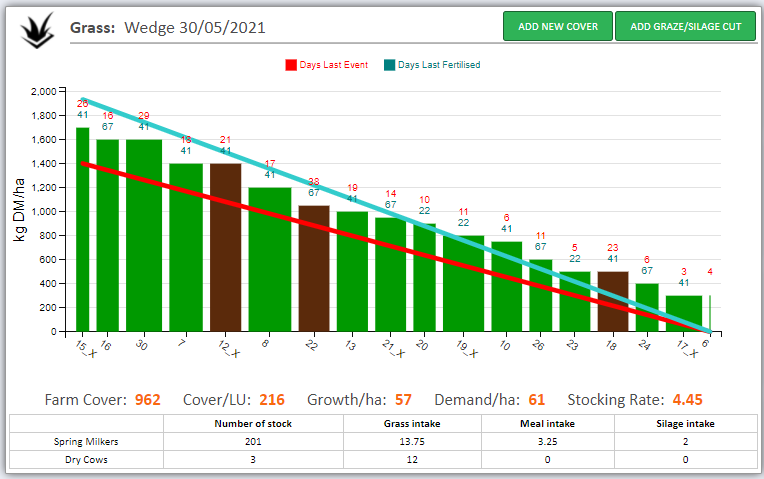
The farm is looking a picture this week and growth has picked up nicely after the recent deluges of rain. We started the 4th round 10 days ago and that first paddock had only received slurry plus 42 units of foliar N so far. Some of the other paddocks on this round will have only received 42 units/acre of N to date.
We are currently applying a mix of foliar fertilisers to grazing paddocks after each rotation to give a rate applied of:
N – 15 units/acre
P – 0.25 units/acre
K- 1 unit/acre
S – 0.4 units/acre
We are mixing a small amount of a CCF fertiliser with CAN, P, K and S along with granular urea in the Tow and Fert. Experience internationally shows a much higher response to foliar applied P and K than granular and there is a brand of normal granular CCF fertiliser available from our co-op that dissolves easily in our Tow and Fert. Other farms this Spring saw benefits from applying small amounts of foliar P especially during the colder weather. Soil temperatures were low and P wasn’t being taken up by the grass plant – hence the purple colour on a lot of grass this Spring. With soil and air temperatures rising we will now use more of our “budget” of N and other nutrients to increase grass growth when the growth response to fertiliser is much higher.
Next time out: Soil test results; brewing Nitrogen Fixing Bacteria; Soil Biology Testing; Multi Species Swards
